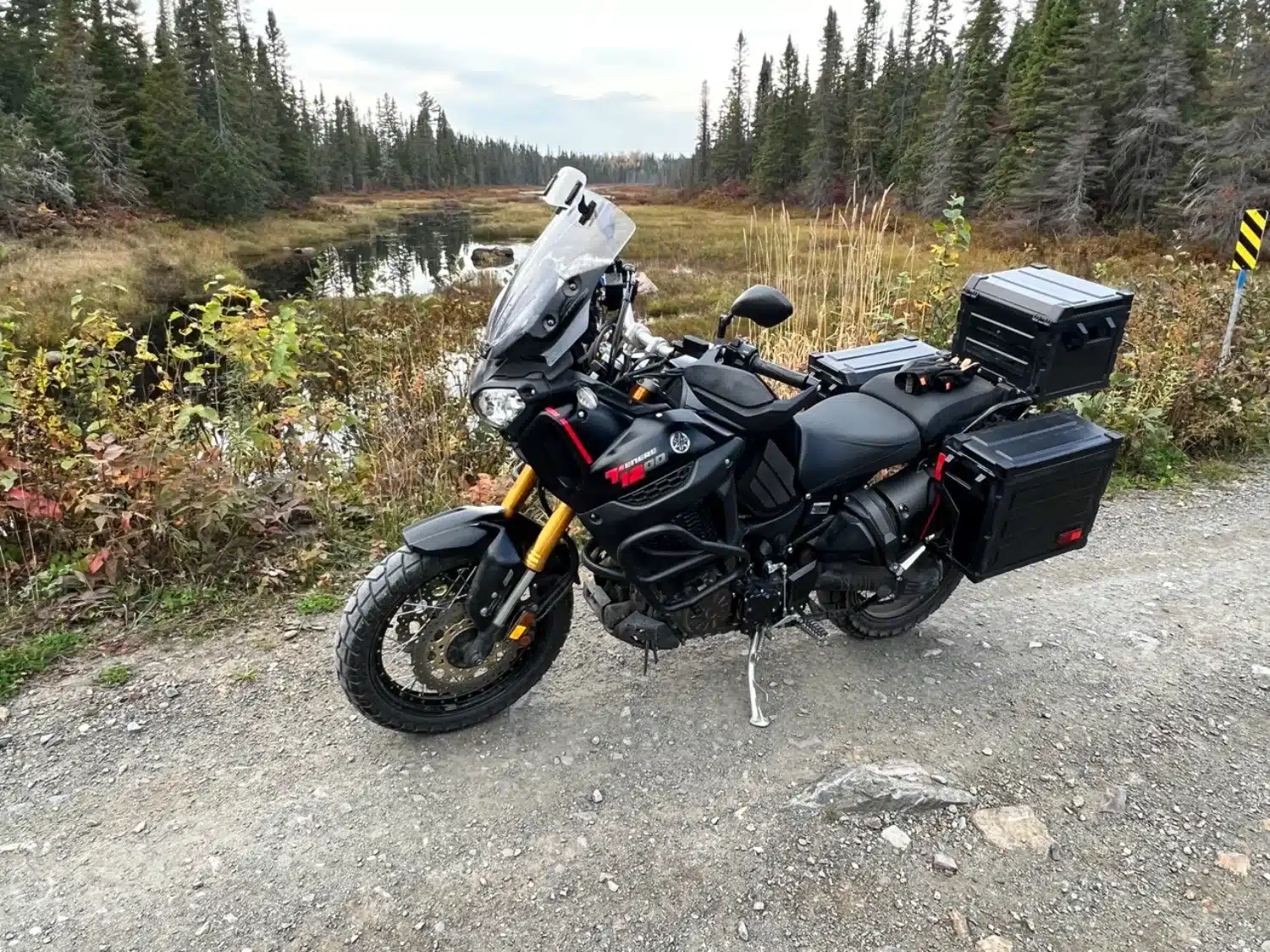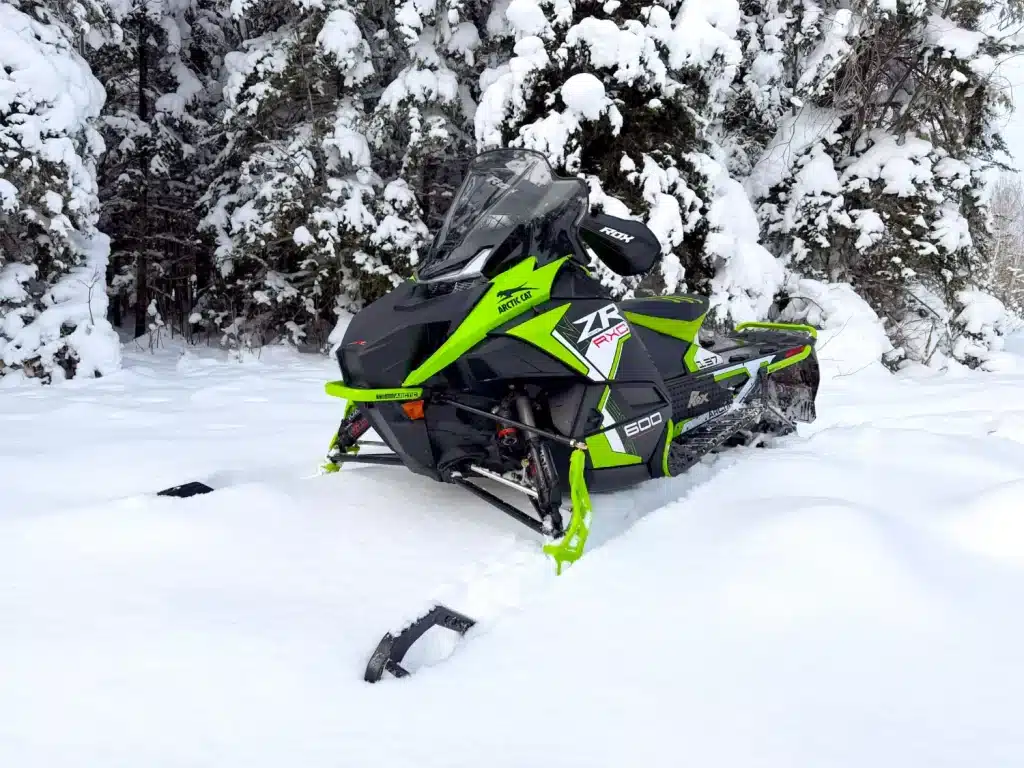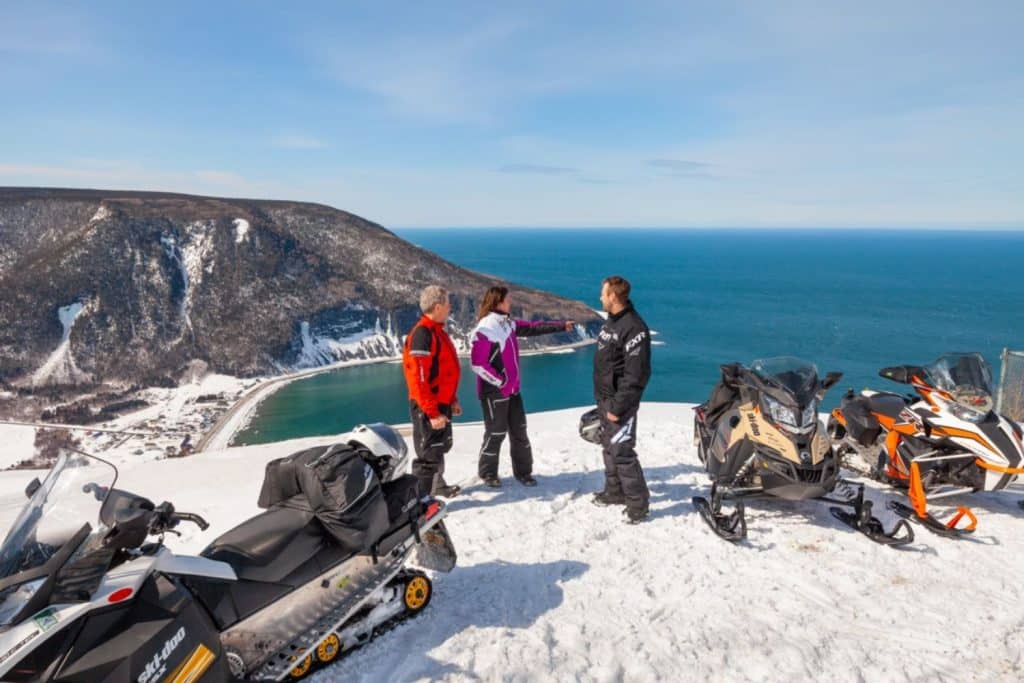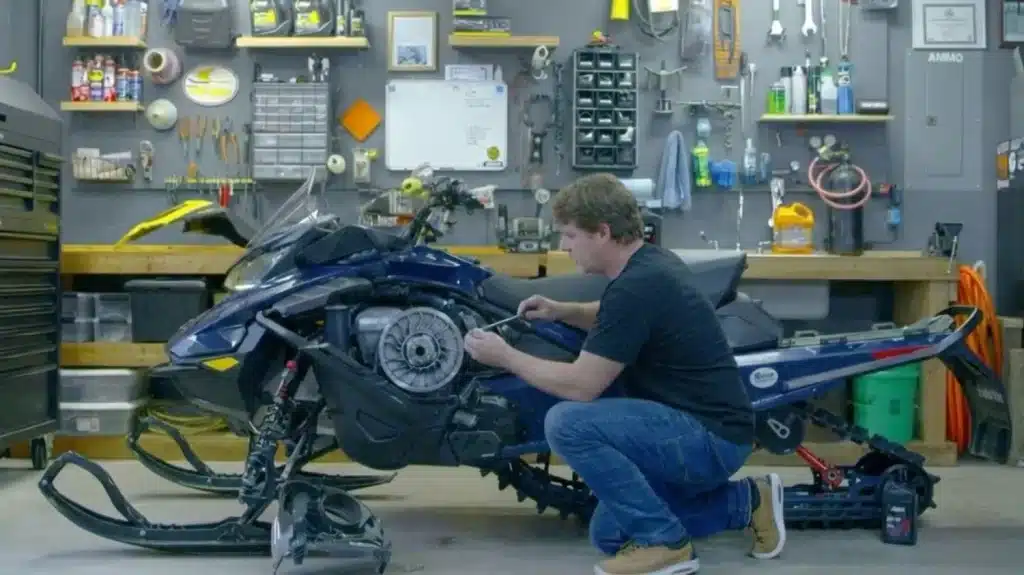If we go back 10-15 years, adventure motorcycling was synonymous with bikes that looked a little strange and were equipped with large aluminum panniers. They were often covered with stickers that summarized their lives and where they had been taken.
At the time, it was the norm: plastic cases were out of the question, let alone leather ones. To go on an adventure, you had to have aluminum cases. These could even be used as stools or tables once you reached a lake. Some people even placed their aluminum suitcases under their motorcycles to keep them upright while repairing a flat tire.
However, although large aluminum suitcases were and still are useful, they now face competition from soft-sided and semi-rigid suitcases. Each type of luggage has its advantages and disadvantages.
It’s also important to understand that if you ride anywhere other than on asphalt and plan to venture off-road, it’s not just the type of luggage system that matters. You also need to know what to prioritize or avoid in terms of luggage solution. Side cases, rear cases (top cases), tank bags, etc. There are as many options available as there are needs to be met.
Is it better to have rigid, semi-rigid, or soft luggage? In fact, these three types are designed for three different types of motorcycle use. I will therefore try to guide you toward the right choice, because it’s easy to get lost. Each motorcycle luggage solution manufacturer brings its own expertise to offer us several options. With or without supports, fixed or easy to remove. Capable of carrying heavy loads or simply going ultralight. As you can see, there is no easy answer; it all comes down to compromise.
Rigid luggage solution: a safe bet for the long-haul traveler
This is the iconic configuration for adventure touring bikes. Aluminum or hard plastic cases—such as Touratech Zega, Givi Trekker, or BMW Adventure Cases—immediately evoke long roads, dust, and the typical look of motorcycle adventure.
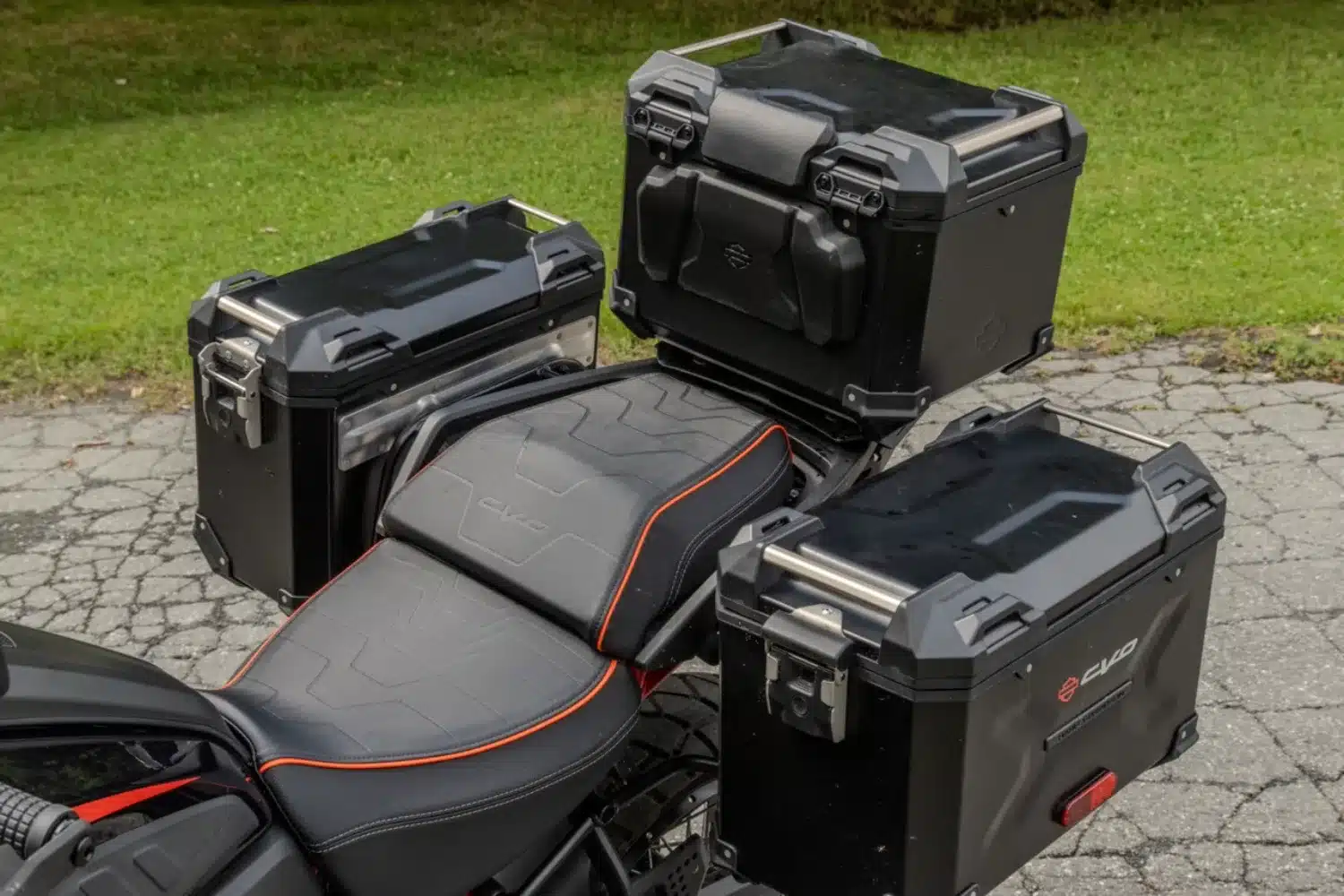
They offer significant capacity, maximum protection for contents, and secure locking. This is especially important if the motorcycle has to be left unattended during nights spent in hotels. Waterproof, practical, and easy to load thanks to their boxy shape, they are perfect for carrying camera equipment, electronics, or camping gear.
But all this comes at a price: weight and bulk. Off-road, they can twist or injure the rider in the event of a fall. They are therefore best suited for trips with a passenger or adventures on smooth trails.
If you’re thinking of opting for plastic side cases to save weight, I strongly advise against it. Although they are a great option for sport-touring motorcycles, they are not very resistant to falls, which are common when off-road riding. They also often come with a side opening system. This means you have to unhook them from their fasteners to load them without fighting against the equipment, which is just waiting to fall out.
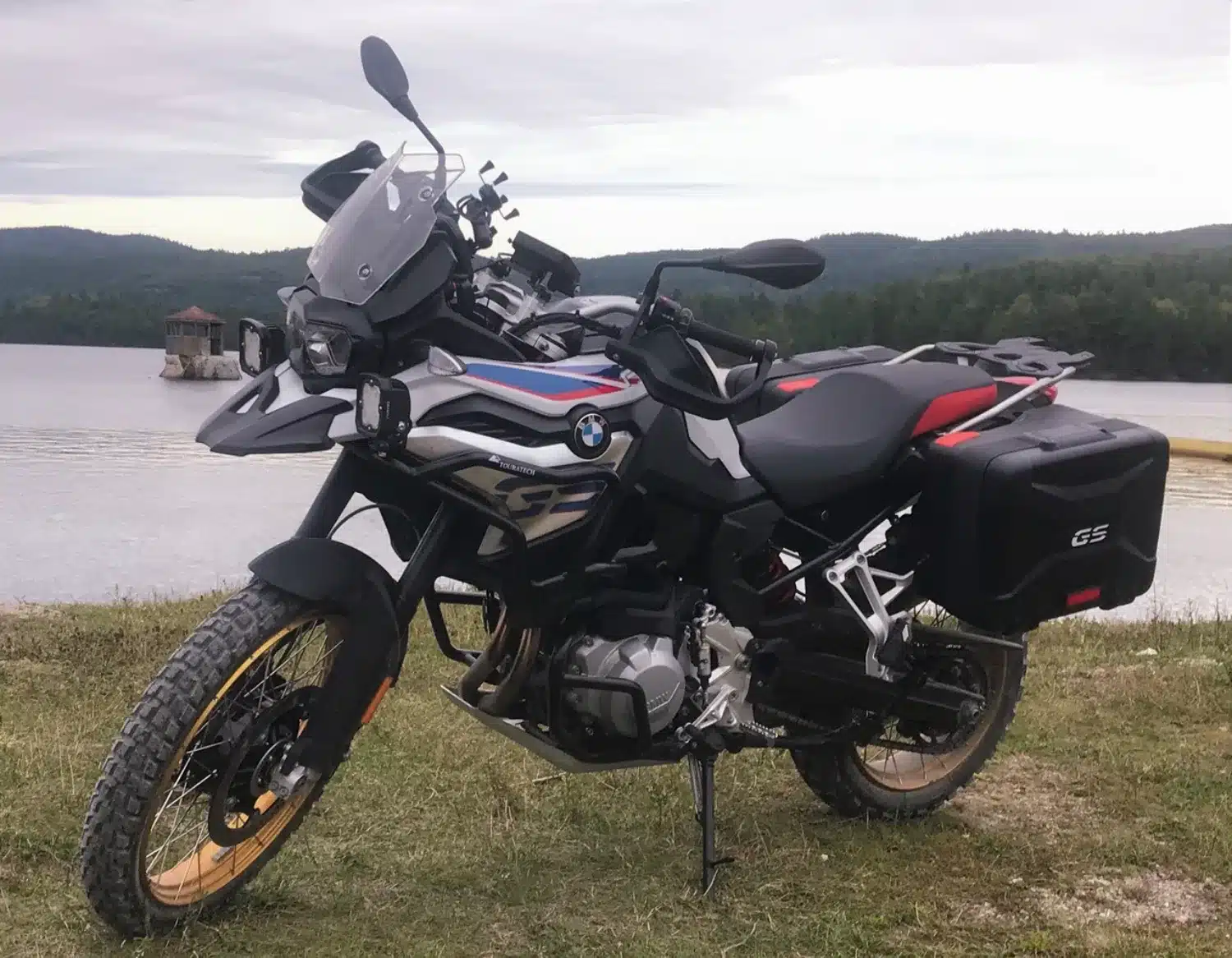
Aluminum cases remain the solution for hard luggage on adventures, as long as the adventure is measured in kilometers rather than in difficulty and extreme conditions. It is important to note that hard cases, when used on very rough trails, can pose a threat to the rider. For example, in technical situations, if the rider’s leg gets stuck between the ground and the hard case, there is a very serious risk of ankle or tibia fracture. This is why hard cases are prohibited on La Classique adventure rides.
Semi-rigid luggage solution: the best of both worlds
Between the rigidity of aluminum cases and the flexibility of fabric bags, there is a happy medium: semi-rigid systems. Think of brands such as Mosko Moto Backcountry, Kriega OS-32, Givi Canyon, or the very popular LoneRider.
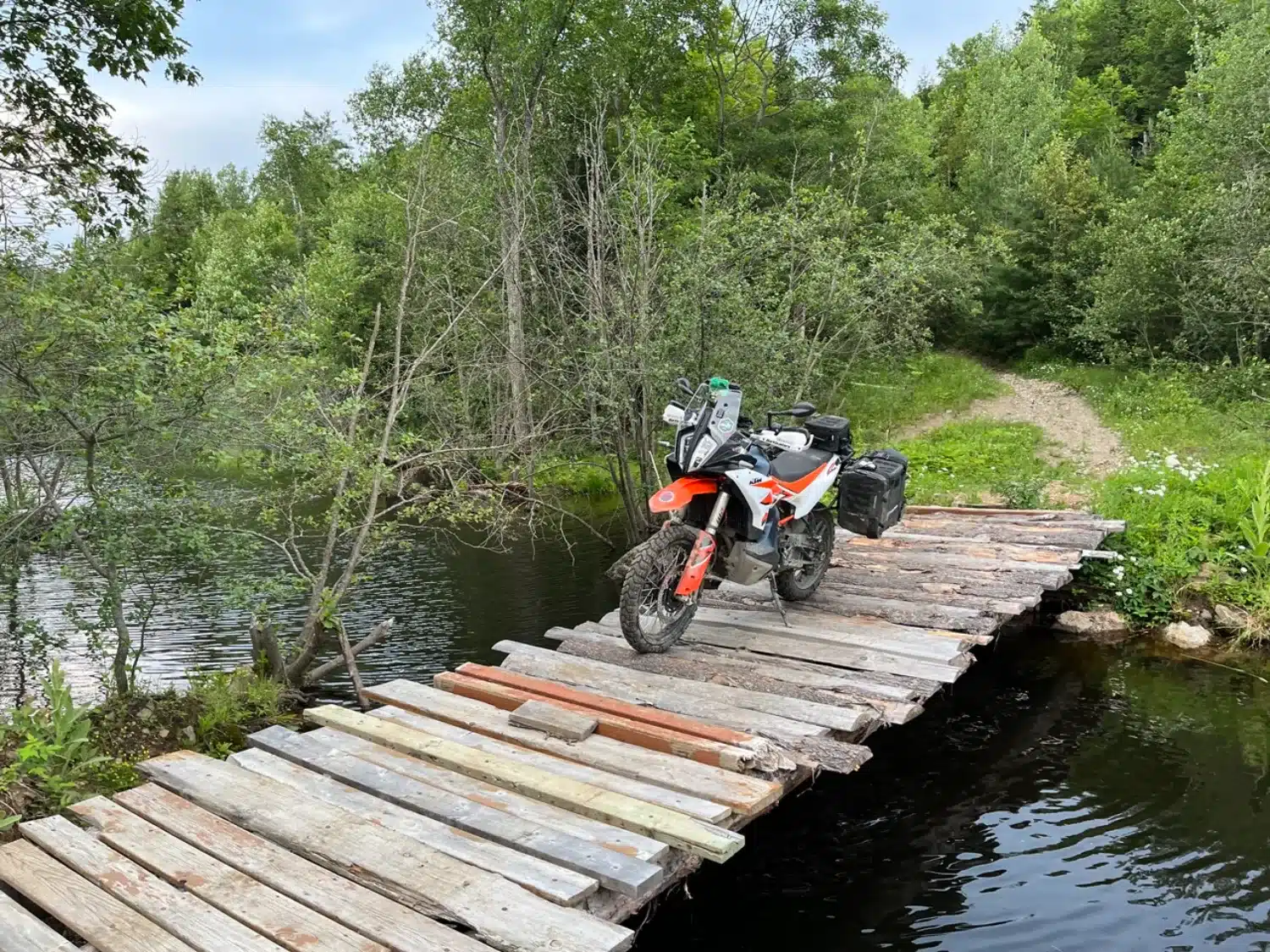
These bags have an internal structure to maintain their shape, while offering a certain amount of flexibility in the event of a fall. They are highly waterproof, often thanks to a removable inner waterproof bag, and the weight remains reasonable, but should not be overlooked. This is because they are often attached to rigid plates made of thick plastic or metal. These plates are used to attach them to supports screwed onto the motorcycle. Like hard cases, semi-rigid cases require supports installed on the motorcycle to attach them.
I used them for two seasons. I really liked them. I had them permanently installed on the supports. When I arrived at my destination, all I had to do was remove the waterproof bag in which I had placed my gear. Some models are available with systems that allow you to detach the cases from the motorcycle or lock them once installed. These systems add weight, a lot of weight.
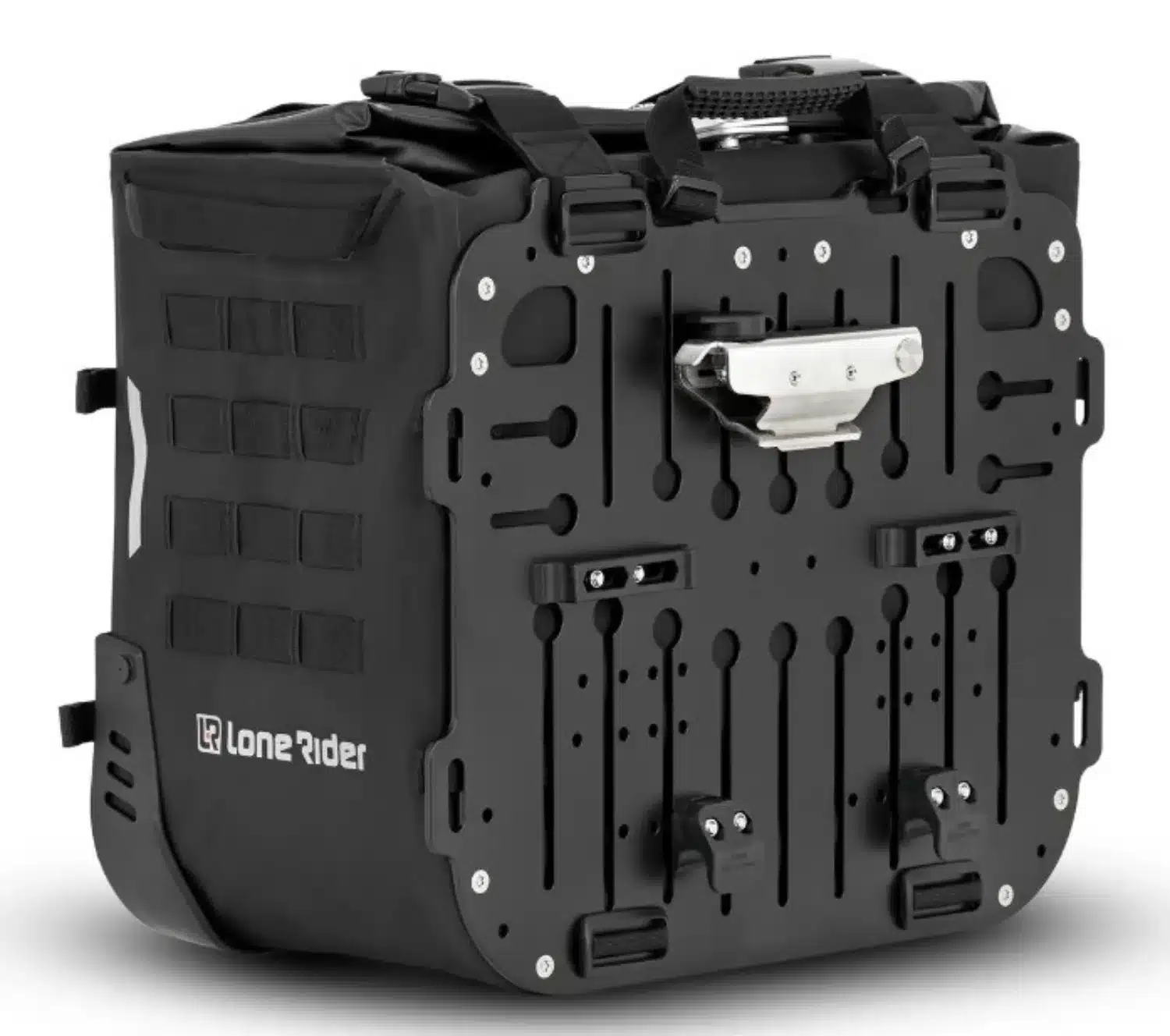
However, it is an increasingly popular choice among modern adventurers because it combines durability, adaptability, and ease of use. On the other hand, anti-theft security remains average. They are often large, which can slow you down if you venture onto narrow trails… I speak from experience here…
Soft luggage solution: when the most complicated route is the only option
When the road disappears and the trails become technical, soft luggage comes into its own. Enduristan Monsoon, Giant Loop Coyote, Wolfman Expedition, and the benchmark Mosko Rackless bags are designed to withstand falls, remain lightweight, and fit all motorcycles without requiring a rack. These systems are as easy to install on a heavy motorcycle as they are on a small dual-purpose bike.
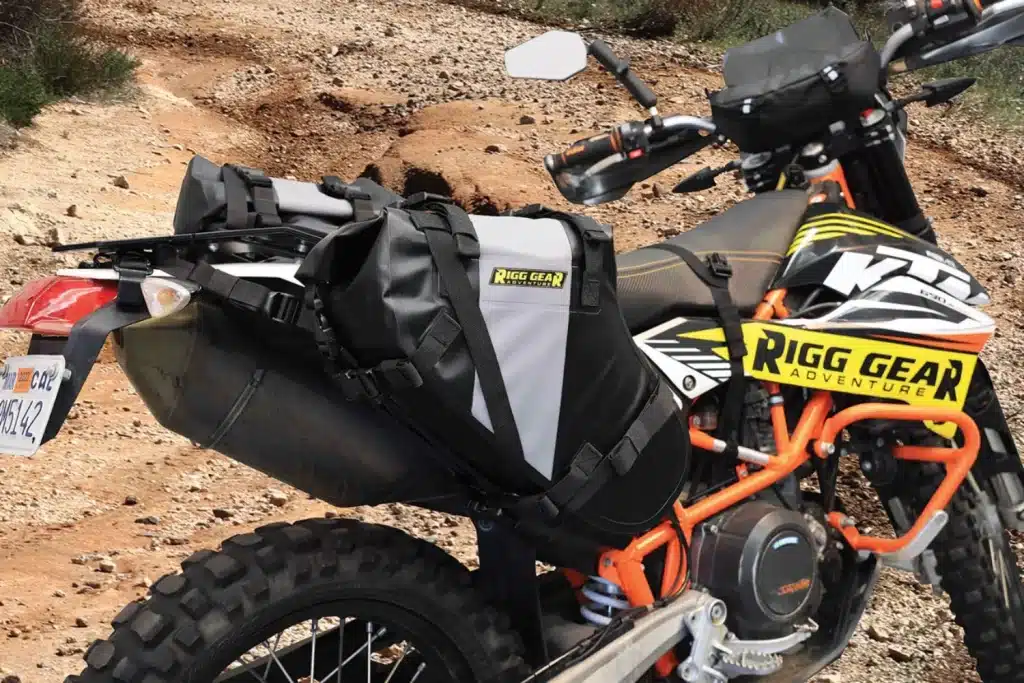
Their big advantage is freedom: quick to install, compact, and lightweight, making the motorcycle more maneuverable. On the other hand, they offer less physical protection for the contents and no anti-theft security. However, this type of luggage is so easy to remove and install that you can easily take it into your hotel room if you have to leave your motorcycle unattended overnight.
How to load your motorcycle properly
The goal is to keep the center of gravity low, centered, and stable, regardless of the type of luggage you choose.
This means that tools, mechanical parts, and anything liquid should be placed at the bottom of the side panniers. It is best to avoid stacking heavy equipment in a top case, as this is the worst place for stability, especially off-road.
Lightweight items should be placed high up and at the rear. Sleeping bags, clothing, and mattresses are ideal for the top case or saddle bag. This reduces the risk of swaying at high speeds and makes handling easier at low speeds.
Lateral balance is also an important consideration. It is essential to have a similar weight on the left and right sides.
A simple difference of 2 or 3 kg can be felt when riding standing up or in tight corners.
On motorcycles with side exhausts, the volume of one of the panniers will be reduced to leave clearance for the muffler. Remember to compensate for the loss of volume by placing heavier items in it.
The tank bag can be an attractive, practical, and accessible solution. However, I would recommend keeping it compact and, above all, lightweight. A volume of 4 liters will do the job nicely. A tank bag that is too large will hinder your movements when riding standing up. Another option to consider is a handlebar bag, provided that your handlebars are not already overloaded with a GPS and phone.
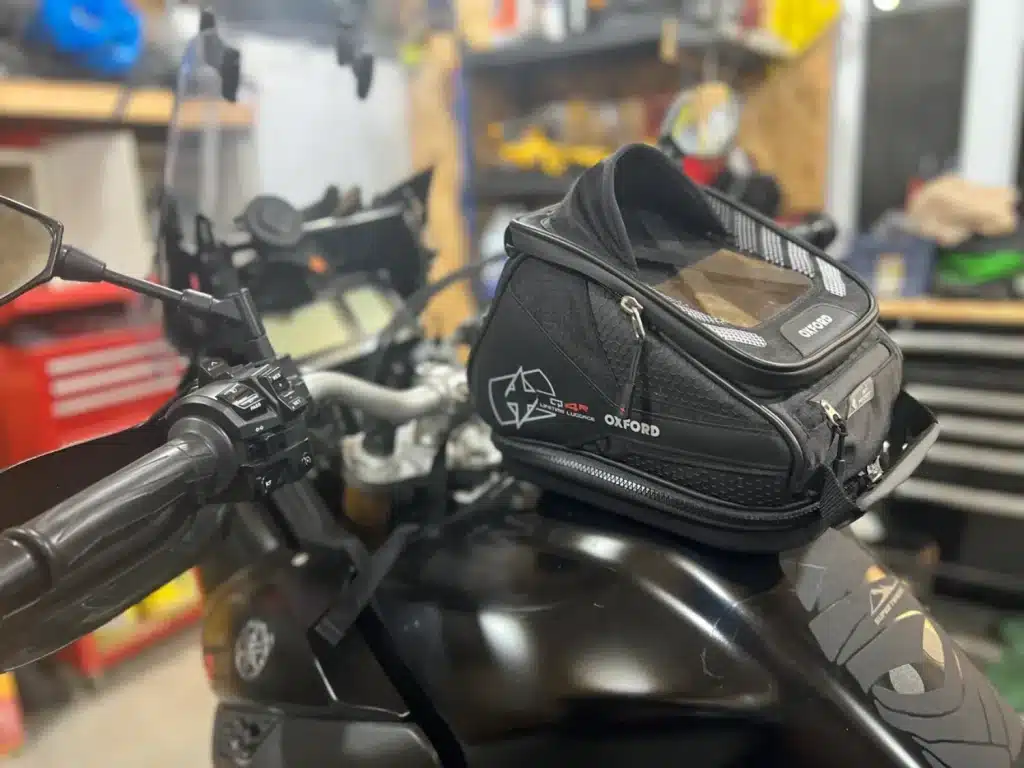
When riding a motorcycle, it is essential to be able to understand the feedback from your bike. If the front end becomes unstable, it means that the rear is overloaded. If the motorcycle tends to sway, the weight is poorly centered in relation to the longitudinal axis of the motorcycle. If it seems heavy to balance, it is loaded too high, which raises the center of gravity.
Anticipating and managing the unexpected
When loading, always keep everything you might need at a moment’s notice within easy reach. Rain gear, first aid kit, basic tools.
There’s nothing worse than having to empty a suitcase in the rain, in the dust, or surrounded by mosquitoes to find your air compressor.
Even if your fastening systems or straps for securing your luggage are of excellent quality, the vibrations that the luggage has to endure can end up playing tricks on us… You must constantly check the condition of the straps and fastening systems.
It is also a good idea to reduce the length of the straps, especially those on the side of the drive chain… In my experience, excess strap that wraps around the sprocket causes easily avoidable damage.
There is no such thing as perfect luggage solution, only the one that suits your needs
For road trips and long journeys, nothing beats hard-shell luggage: protection, security, and volume.
For versatility, semi-rigid baggage offers the best compromise between strength and adaptability.
For pure off-roading, soft luggage system is the option to consider: lightness, robustness, and rider safety.
But beyond the choice of equipment, the secret lies in how you load it. Even the best luggage solution loses its advantage if the weight is poorly distributed.
Luggage system should accompany your adventure, not limit it.

